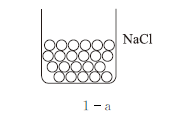|
教学研究
|
|
 |
|

|
|
|
| 中学生对“溶液”概念理解的可视化表征及启示 |
| 施观雪, 卢姗姗*, 毕华林 |
| 山东师范大学化学化工与材料科学学院 山东济南 250014 |
|
| Research and Implication on the Visual Representation of Students' Conceptual Understanding of “Solution” |
| SHI Guan-Xue, LU Shan-Shan*, BI Hua-Lin |
| College of Chemistry,Engineering and Materials Science of Shandong Normal University,Ji'nan 250014,China |
|
|

摘要:学生概念理解的可视化表征可以通过学生的作图来展示,分析图示可以获取学生概念理解的更加深入的信息。梳理了国内外有关中学生对“溶液”概念理解的研究,集中对学生的作图进行分析,呈现了中学生对“溶液”概念理解的可视化表征。针对作图发现的学生概念理解的结果,提出了促进中学生“溶液”概念理解的教学启示。
|
|
| 关键词: 溶液,
可视化表征,
概念理解
|
|
|
|
通讯作者:
*E-mail:615046@sdnu.edu.cn
|
| 引用本文: |
|
施观雪, 卢姗姗, 毕华林. 中学生对“溶液”概念理解的可视化表征及启示[J]. 化学教育(中英文), 2022, 43(1): 70-75
|
|
| [1] |
Çalýk M,Ayas A,Ebenezer J V. Journal of Science Education and Technology,2005,14(1):29-50
|
| [2] |
Ebenezer J V,Fraser D M. Science Education,2001,85(5):509-535
|
| [3] |
Liu X,Ebenezer J. Research in Science and Technological Education,2002,20:111-132
|
| [4] |
Adadan E,Savasci F. International Journal of Science Education,2012,34(4):513-544
|
| [5] |
Devetak I,Vogrinc J,Glažar S A. Research in Science Education,2009,39(2):157-179
|
| [6] |
Raven S. Research in Science and Technological Education,2015,33(3):269-303
|
| [7] |
Ainsworth S,Prain V,Tytler R. Science,2011,333:1096-1097
|
| [8] |
Quillin K,Thomas S,Ledbetter M L. CBELife Sciences Education,2015,14(1):1-16
|
| [9] |
Tippett C D. International Journal of Science Education,2016,38(5):725-746
|
| [10] |
Tytler R,Prain V,Aranda G,et al. Journal of Research in Science Teaching,2019:1-23
|
| [11] |
Yeh Y,McTigue E. School Science and Mathematics,2009,109(8):435-449
|
| [12] |
Tien L T,Teichert M A,Rickey D. Journal of Chemical Education,2007,84(1):175-181
|
| [13] |
Kelly R M,Barrera J H,Mohamed S C. Journal of Chemical Education,2010,87(1):113-118
|
| [14] |
Kelly R M,Jones L L. Journal of Chemical Education,2008,85(2):303-309
|
| [15] |
Kelly R M,Jones L L. Journal of Science Education and Technology,2007,16(5):413-429
|
| [16] |
卢姗姗. 中学生“电解质”概念相异构想的探查研究. 济南:山东师范大学硕士学位论文,2012:61-63
|
| [17] |
施观雪. 中学生解释溶解现象的推理类型研究. 济南:山东师范大学硕士学位论文,2020
|
| [18] |
Çalik M,Ayas A. Journal of Research in Science Teaching,2005,42(6):638-667
|
| [19] |
Blanco A,Prieto T. International Journal of Science Education,1997,19(3):303-315
|
| [20] |
Taber K S,García-Franco A. Journal of the Learning Sciences,2010,19(1):99-142
|
| [21] |
Smith K C,Nakhleh M B. Chemistry Education Research and Practice,2011,12(4):398-408
|
| [22] |
Ebenezer J V,Erickson G L. Science Education,1996,80(2):181-201
|
| [23] |
Abell T N,Bretz S L. Journal of Chemical Education,2018,95:504-511
|
| [24] |
Naah B M, Sanger M J. Journal of Science Education and Technology,2013,22(2):103-112
|
| [25] |
Johnstone A H. Journal of Chemical Education,1993,70(9):701-705
|
| [26] |
Kabapinar F,Leach J,Scott P. International Journal of Science Education,2004,26(5):635-652
|
| [27] |
Adadan E,Irving K E,Trundle K C. International Journal of Science Education,2009,31(13):1743-1775
|
| [28] |
胡久华, 王磊,支瑶,等. 化学教育,2013,34(4):44-49
|
| [29] |
陈俊芳. 化学教学,2019(8):38-41
|
| [30] |
王荣桥. 化学教学,2017(10):26-28
|
|
|
|